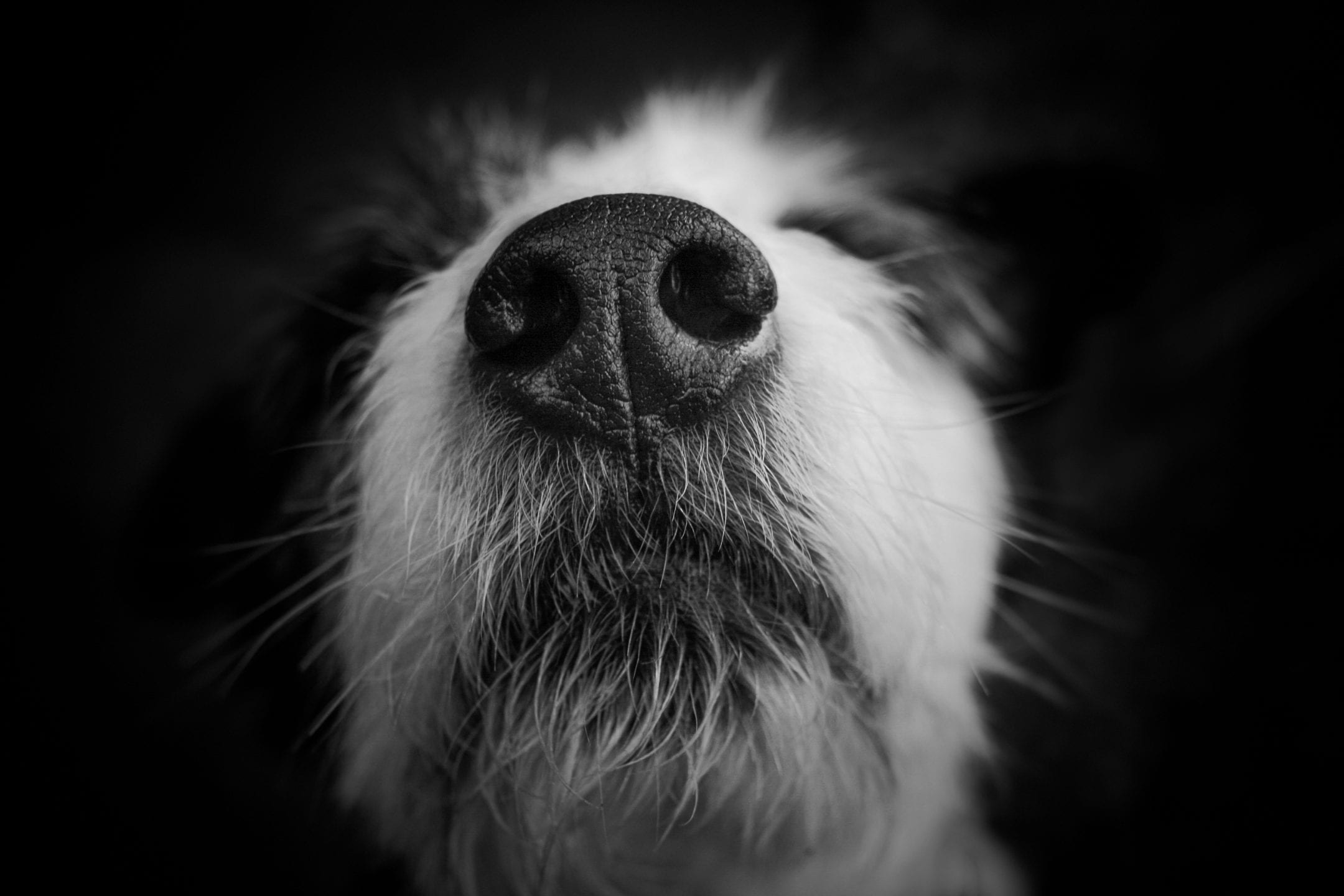The olfactory system of a dog detects diseases and disorders by responding to chemicals given off by affected individuals.
Introduction
Look around at animals in the woods, on a farm, or even in our homes, and it’s clear that there’s an incredible variety of how they use each of the senses. Birds of prey are masters of sight. Bats and moths are known for their keen sense of hearing. For canines, the sense of smell rules. In the wild, an exquisite sense of smell gives wolves and others a leg up when it comes to finding prey and communicating with each other. In domestic dogs, it has become the foundation of an unexpected talent: the ability to help detect the presence of certain diseases and disorders in humans.
The Strategy
Dogs have a remarkable sense of smell. When they sniff, a bit of the air they take in goes to a maze-like structure in their heads called the olfactory recess. Thanks to the extensive surface area this structure offers, dogs have more than half a billion cells available to sense scent—some 15 times what humans have. The part of the nervous system these cells send signals to, called the olfactory bulb, is three times the size of that in humans.
Another one of their secrets is that when a canine sniffs, it rapidly inhales and exhales. During exhalation, air jets downward and out to the side, which flow modeling reveals actually pulls air from in front of the dog closer to its nose, allowing it to sniff scents from farther away.
These adaptations allow a dog to respond to the presence of molecules in the air with exquisite sensitivity: Some dogs can detect a single odor molecule among a trillion others.

How Your Dog's Nose Knows So Much
Inspired by patients’ reports that their dogs seemed to be aware that something was off in their bodies, and knowing that diseases cause chemical changes that could be detected by such a sensitive smell processing system, researchers have trained dogs to signal when they detect certain chemicals associated with some of these diseases.
Dogs can use the “sniff test” to identify individuals with breast cancer, disease, lung cancer, diabetes, and even COVID-19. They also can use their sense of smell to detect molecules that a person with epilepsy produces when he or she is experiencing a seizure. We don’t know exactly what these molecules are, but scientists think they originate in brain cells involved in the seizure and travel to sweat, urine, and breath, where dogs’ super-noses can pick them up.
Dogs can use the “sniff test” to identify individuals with breast cancer, kidney disease, lung cancer, diabetes, and even COVID-19.
The Potential
If these chemicals are released in advance, they might also help anticipate the onset of an incident such as diabetic imbalance or an epilieptic seizure. . Being able to know ahead of time that a seizure is coming on could be a literal lifesaver, allowing individuals to get out of the water, move away from hard objects, or otherwise enter a safe area before the seizure occurs.
The most direct approach to tapping this talent is using dogs directly as detectives. But that might not always be practical. Understanding the mechanism by which a dog’s olfactory system can pick out a single scent from among many others, even at extremely low concentrations, could open doors to the development of “e-noses” that electronically detect the presence of single molecules of interest in a sample.
This could lead to improved detection of illicit substances, the ability to provide evidence of the location of a person or movement of a person over time, and more. It also could inspire development of devices that use olfactory cues in place of visual or tactile elements—for example, a smart lock or smart ignition system that activates when a person with a unique scent profile shows up.





